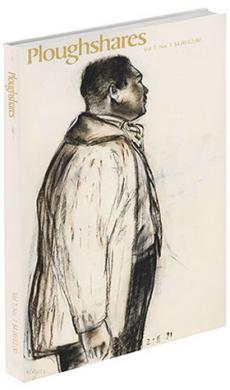The Mind Afoot: rev. of The Night Won’t Save Anyone by Marcia Southwick
Marcia Southwick, in her first major collection (
The Night Won't Save Anyone, University of Georgia Press, $4.50), at times seems to totter toward this reliance on the easily conjured. But she saves her poems simply by dramatizing her personae to adapt them individually to the sometimes dangerously Merwin-like worlds they inhabit. In her long sequence, "What the Trees Go Into," she suggests that there are people peculiar to the place she envisions, particular people whom she idealizes in unexpected ways:
I am like the woman
who sends out her soul
in the form of a wasp
* * *
I have sons who hang their clothes
in the trees
hoping the dead will slip
into the garments they recognize
This is a vision of the speaker as the mother of poets, since what these sons perform is truly an Emersonian ideal of the poet's function: to present forms in which all men and women will find themselves. The dead occupy an oddly dramatic function in Southwick's poetry:
The dead come down to eat fish, ascending again
in the smoke of fires they make—-and what they sing, no one can remember.
These are not dream poems, though sometimes the speaker dreams. What happens in this sequence has a dramatic actuality. In its rich narrative, it presents a kind of medieval morality play that replaces the old allegorical figures with the murkier but more daring masks of the modernist imagination. Morality here affirms the value of discovery. Dreaming and waking are not so much different states as stages on a continuum of discovery, in which a series of images represents the revitalization of language through the imagination. The telling of the poem itself enlivens the dead; much as the speaker is herself awakened by her son, one of the proto-poets draping the forms of poetry over raw nature to stimulate the unimaginative. That they succeed is demonstrated not dramatically but aesthetically by the freshness and varied imagery of this impressive sequence.

